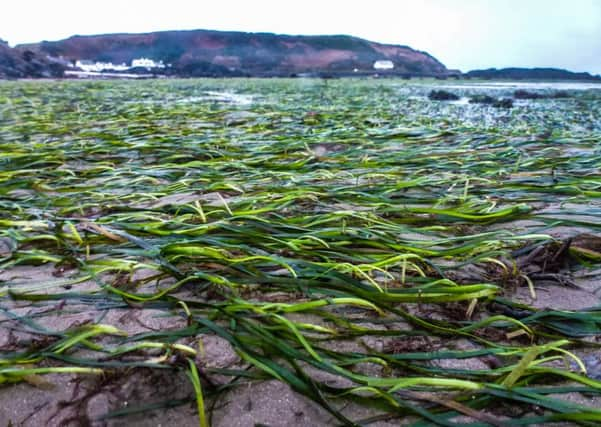Seagrass meadows to be saved around Scottish coasts
This article contains affiliate links. We may earn a small commission on items purchased through this article, but that does not affect our editorial judgement.


Project Seagrass is currently extending its research programme to monitor the health of Scotland’s vast seagrass meadows which are chiefly found on the west coast.
The meadows are seen as key to sustaining the lives of species such as seahorses as well as young fish, such as Atlantic cod, starting out their lives in shallow waters.
Advertisement
Hide AdAdvertisement
Hide AdSome seagrass species are known to capture and store carbon dioxide.
Dr Richard Lilley of Project Seagrass said: “Because it is not as colourful as coral reef, seagrass tends to be missed out of the conservation agenda. We are hoping to change all that.
“Seagrass has many qualities. For example, baby fish, before they are big enough to head deeper into the ocean spend their formative years in seagrass meadows. It is also a very important habitat for sea horses.
“The UK is a bit behind the times in knowing where the sea grass is. One of the reasons we are moving up in to Scotland is that we know there is a lot of sea grass on the west coast, but we don’t know exactly how much.
“One of the first things we need to do is find it and record it so over time we will know how it is being impacted by coastal fishing and other activities.”
Research by Dr Lilley’s colleague Richard Unsworth, of Swansea University, has found some 30,000 km2 of seagrass - known as Zostera marina - has disappeared over the past two decades, about 18% of the global area.
One hectare can produce 100,000 litres of oxygen per day, can support 80,000 fish and 100m invertebrates – and absorb ten times as much CO2 as a pristine area of Amazon rainforest.
Scottish Seagrass, now set up by Dr Lilley, aims to mobilise a team of volunteer ‘seagrass spotters’ who can photograph sea grass meadows on their smartphone before sending the pics for identification using a specially built map.
Advertisement
Hide AdAdvertisement
Hide AdUsing the GPS tag on the image, it is hoped researchers can build up an accurate map of where Scotland’s seagrass meadows lie.
Dr Lilley said he hoped he could create a new movement of “citizen science” by boosting public interest in seagrass and its important role in marine biodiversity.
He said there was an “infectious” mood in Scotland over citizens engaging with environmental management and pointed to the work of the Community of Arran Seabed Trust (COAST) which has set up a “no take zone” - which bans fishing and removal of any natural resources - around Lamlash Bay to improve marine biodiversity.
Dr Lilley stressed the importance of seagrass to Scotland’s fishing communities and added: “So many coastal fishing communities are dependent on coastal health. To put it simply, if there are no baby fish, there are no adult fish and if there are no adult fish, there is no fishing industry.”
Dr Lilley said it was likely a wasting disease killed off seagrass meadows during the 1930s with it now essential to build a fresh record of the species in Scottish waters.
He added: “It’s really about trying to find out what we are dealing with, getting a baseline and knowing what we have to protect.”
A series of seagrass mapping dives with Scottish Seagrass intern Lauren Clayton, a postgraduate student at Glasgow University, and Deborah McNeill of Glasgow University Sub Aqua Club, assisting the project.
DOWNLOAD THE SCOTSMAN APP ON ITUNES OR GOOGLE PLAY
